Photo

FRIEZE PATTERNS. THEY TAUGHT US FRIEZE PATTERNS.
Imagine teaching modulo n, symmetries and geogebra in pre-school haha :^D
8 notes
·
View notes
Text
check yourself before you wreck yourself
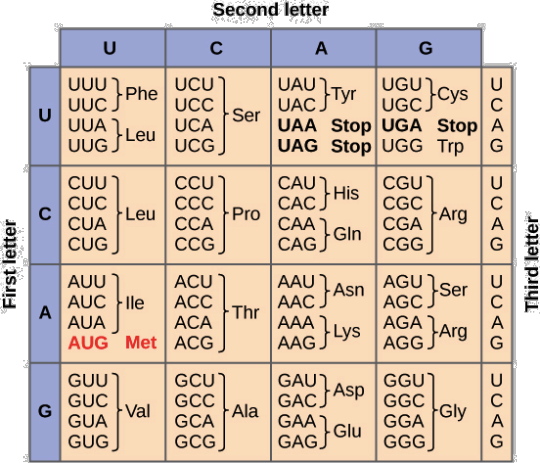
I was reviewing for my biochemistry class and I took a long hard look at this mRNA codon chart which I lifted off Khan Academy.
Notice anything?
I realized that no matter what the last letter of a codon was, it often translated into the same amino acid. Not for all but for some amino acids like Serine and Valine, you’d have 4 possible codons. That means that if there’s a mistranslation along the way there would be no change in the amino acid and the resulting protein would be the same. The genetic code is kind of error-correcting in some ways. This would mean that it has some sort of a fail-safe against mutations! :D
Of course this isn’t a hard example of an error-correcting code but having six different ways to code Leucine would result in far less mutations and thus conserve genes that *work*.
I went down the rabbit hole to find this :
Organic codes may thus be identified with the system of nested error-correcting codes needed to conserve the genetic information. A majority of biologists deny that information theory can be useful to them. It is shown on the contrary that the living world cannot be understood if the scientific concept of information is ignored. Heredity makes the present communicate with the past, and as a communication process is relevant to information theory, which is thus a necessary basis of biology besides physics and chemistry (Battail, 2019).
It certainly makes for an interesting thing to think about. In any case, bOY isn’t coding-theory swell? hehehaha
Sources:
Battail G. (2019). Error-correcting codes and information in biology. Bio Systems, 184, 103987. https://doi.org/10.1016/j.biosystems.2019.103987
https://www.khanacademy.org/science/ap-biology/gene-expression-and-regulation/translation/a/the-genetic-code-discovery-and-properties
0 notes
Photo
It’s really cool to see where art and math intersect. I love drawing and though I didn’t pursue it for college, I think about graphic design and I consider myself more of a creative than a logically inclined person. Then you have God’s favorites like M.C. Escher who are just both. His works are hypnotic.
He makes use of glide reflections, translations, rotations to make these weird and quirky animals. We use the same mathematical concepts to make textures in videogames, tiled desktop wallpapers, I myself use it to make Patterns in Animal Crossing.

Switzerland and Belgium
1935-1941
After leaving Rome, Escher and his family moved to Switzerland. But because Escher was unsatisfied, his family remained there for only two years.
In 1937, Escher’s family moved to Belgium, but were forced to move yet again in 1941 because of WWI.
14 notes
·
View notes
Photo
M.C. Escher, the father of tessellations, he draw CAT :^D.

In an effort to ~shake things up~ we are going to start incorporating theme weeks every once in a while. This week: Cats! Please enjoy, White Cat I by M.C. Escher (ca. 1919).
405 notes
·
View notes
Text
NON EUCLIDEAN HALLWAY HAHAHHA IM DEAD
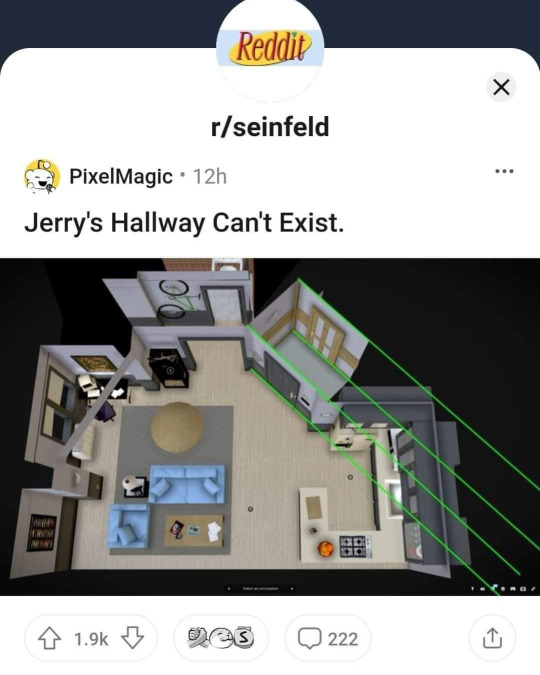
65K notes
·
View notes
Text
Pride Month and MATH: The Imitation Game (2014)

In class, we discussed math and cryptology. If anything, math loves mixing letter and numbers together for better of for worse. This is one of my favorite hollywood historical thrillers. It’s about Alan Turing, an English mathematician and cryptoanalyst, who cracked intercepted Nazi german messages in WW2 but was later persecuted for being gay. For those who haven’t watched it, spoilers ahead!!!
Computers are great. You know what they’re for? automating stuff. There’s nothing like coding and automating something for 8 hours when you can do it for 5 minutes lol. Thankfully, lives aren’t at stake. In the movie, Alan (played by Benedict Cucumber) and the Cryps (geddit? Crips? Cryptographers? the gang?) have 24 hours at each message because the Nazis reset it on the daily. Enigma was a mechanized way of making polyalphabetic substitution ciphers. They later broke the code...Well, Polish mathematicians cracked it too but they cracked the banking version. The military version was much trickier.
youtube
This video explains the encryption that they were up against and the guy in the video actually uses the original Enigma machine and you can see it in action. He also details how the math behind decrypting it saved lives. What made Enigma different from past codes was that the alphabet shifted at each letter typed in and the settings changed so time was of the essence. There are other youtube videos on the predicament they were up against and its flaws as well like this one. I can’t explain the maths behind it because I’m a potato but for the nerds out there who are interested, give it a click!
What I’d like to take up however was the discrimination and conviction of Turing for “indecency” in 1952. Turing’s home was burgled and as Turing reported the crime to the police, he admitted to having sexual relations with a man and he was convicted of that as it was still a crime in the UK to be gay. He was later subjected to hormone therapy which rendered him impotent and even caused breast tissue to form. He died at 41. The cause? suicide, they say. The Queen later signed posthumous pardon in 2013.
Let us not forget, while Pride is all rainbows and love, it took us a long time to get to where we are and many lives were lost. People fought to exist and let’s take this time to remember them. Happy Pride.
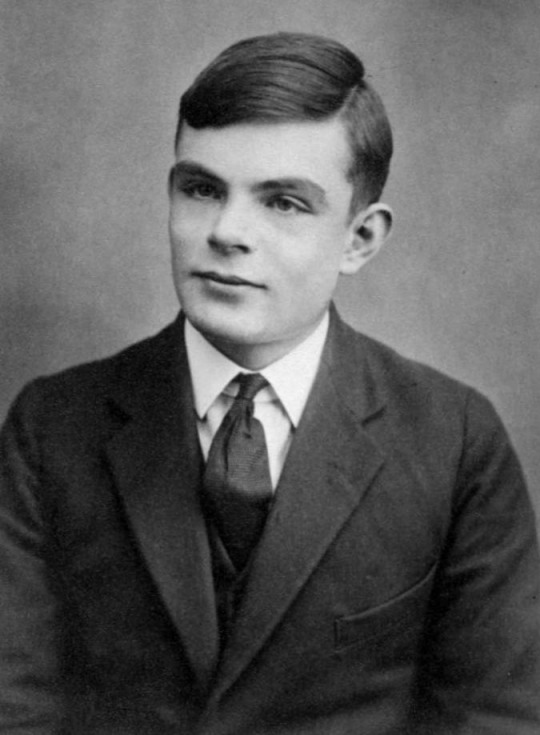
More nerdy links:
https://www.matematiksider.dk/enigma_eng.html
https://en.wikipedia.org/wiki/Alan_Turing#cite_note-138
https://www.brainpickings.org/2017/12/11/code-girls-liza-mundy/
0 notes
Text
Wait, hear me out...
I remember when I used to play this game with my friends. It’s called wikiracing. It’s when you click one blue hyperlink text and try to get from there to another random Wikipedia page like Genghis Khan. You can play the game here. You try to do it in as few clicks as possible and as fast as you can.
Now, if the pages/hyperlinks were nodes I can’t help but wonder what that small-world system or lattice might look like...hmmm.
0 notes
Text
It’s all about the Connections
“It’s not what you know. It’s WHO you know.”
As it turns out, this is the case for abstract art. In a research inspired by //using one’s professional networks to achieve success//, the findings were that creativity and success in the art world have no correlation.
The lecture in class was on small-world systems and it’s generally a bunch of points and lines linking groups of them around. You can apply this to how Facebook seems to know who to recommend to you in the friend suggestions using the mutual friends as a guide. We didn’t delve into clusters and graph theory so much but we did discuss the various applications of this. Besides internet hyperlinks, genetics and phylogeny, airports, etc. this is graph looks to be a great way to show that the famous artists in abstract art pretty much moved around in the same small circles.

This is the interactive graph from MoMa. You can even click on the different names to hone in on who they knew based on correspondences and data that MoMa had in their archives.
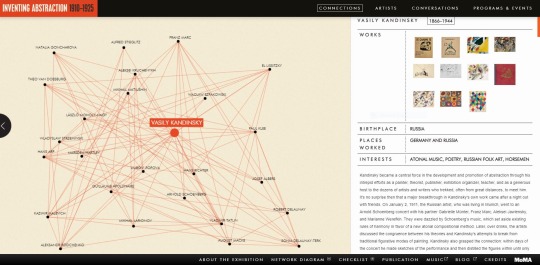
Bringing this into today’s issues: There’s a reason why they blocked off social gatherings during the Covid-19 pandemic. I hate how people are still off partying without realizing that their web of friends is larger than they think (cough Tana Mongoose and the infamous L.A. house party with other internet influencers cough). Sure it might just be 10 people. But some random Russian artist on this map like Gustav Klutsis knew exactly 9 people who he could have had a party with and he’s 5 random name clicks away from Pablo Picasso who knew 24 people. One sneeze and we’re all done for.
ANYway here are some links. Stay at Home yall.
https://www.artsy.net/article/artsy-editorial-artists-famous-friends-originality-work
https://www.moma.org/interactives/exhibitions/2012/inventingabstraction/?page=connections
https://www.nytimes.com/2020/08/06/style/influencer-parties-jake-paul-tana-mongeau-thomas-petrou-hype-house.html
https://en.wikipedia.org/wiki/Small-world_network#:~:text=A%20small-world%20network%20is%20a%20type%20of%20mathematical,by%20a%20small%20number%20of%20hops%20or%20steps.
0 notes
Text
Solitary Confinement and Math
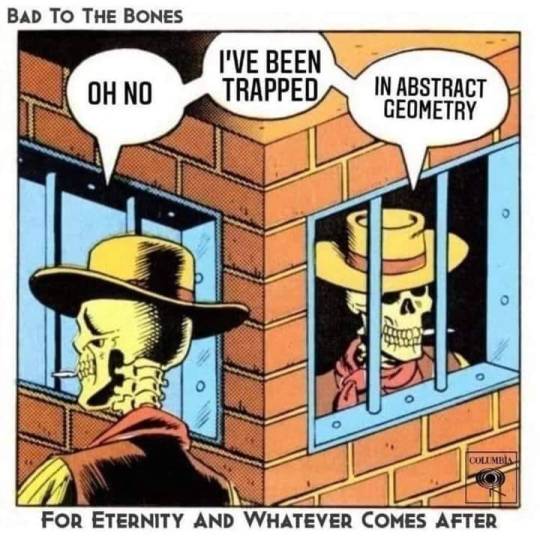
The year is 2011 a guy named Christopher Havens is convicted of murder and is incarcerated. In 2013, he writes a letter and it says
“To whom it may concern, I’m interested in finding more information on a subscription to Annals of Mathematics for personal use. I’m currently serving 25 years in the Washington Department of Correction and I’ve decided to use this time for self-betterment. I’m studying calculus and number theory, as numbers have become my mission. Can you please send me any information on your mathematical journal? Christopher Havens, #349034
PS. I am self-teaching myself and often get hung on problems for long periods of time. Is there anyone who I could correspond with, provided I send self-addressed stamped envelopes? There are no teachers here who can help me so I often spend hundreds on books that may or may not contain the help I need. Thank you.”
In 2020 he becomes a research paper author. Here’s the link to his paper: Linear fractional transformations and nonlinear leaping convergents of some continued fractions. He really did it! Bjeesus...
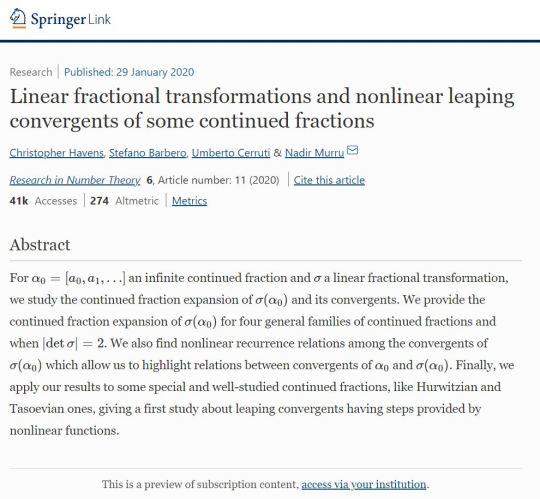
Early in 2016, he and his mentors later came up with the Prison Mathematics Project or PMP. It’s really amazing that math can be so transformative (haha pun intended. coffee cups and donuts are ironically what cops are always eating in films). It can either make a beast of a man or a man of a beast. Because he really went BEASTMODE on that NUMBER THEORY Y’ALL. His story is really so interesting. He just really did some math problems with pencil and paper in his prison cell then he’s self-teaching calculus? I almost failed college calculus! At some point they were even sending him math textbooks and math magazines which the prison didn’t allow. Eventually, they worked with the wardens and after passing letters back and forth they got a prison classroom, a library and eventually a whole ass math club of sorts. They even celebrated Pi Day!
Honestly, this is one of the reasons I’m against death penalty. This man was a drug addict. Addict or no, with so many people lost to Duterte’s drug war, brilliant minds and great people have been lost to bullets. They could have been innocent and even if they were indeed addicts, they could have been mathematicians! There can be passionate people like this who were simply lost to factors like poverty and privilege that they didn’t even have control over in the first place. There are great minds and there’s talent everywhere if only everyone was given the chance...
Currently, Christopher is trying to get an associate degree but apparently he already knows all the math they require
I wonder if there are any local mentorship programs in the country. I’d really like for there to be something like this. I couldn’t teach in it but it sounds like it could make a big difference.
Also, since we’re all stuck in isolation maybe it’s time to self-teach myself calculus again huhu
0 notes
Quote
If only vaccination rates were exponential.
no one. literally no one.
1 note
·
View note
Text
somebody tag the math department lol

0 notes
Text
A little and a long way
youtube
The population infected grows fast but keeping it from getting any worse takes being more careful when washing your hands, wearing your faceshields and facemasks and just staying home. If we cared just a *little* bit, we can keep this virus from worsening our current situation. This is all based on numbers and calculations and to our best knowledge, the strategies and regulations being pushed on us work or at least they soon will. Maybe it's a long way from now, but even just caring a little can affect the numbers greatly.
0 notes
Text
Numbers and Patterns: Hyperbolic Crochet
I don’t understand much of what’s going on but whatever it is, it looks cool.

This is a crocheted coral from Crochet Coral Reef’s exhibition being made in Toronto, Canada. This combination of fiber arts and science is reminiscent of M.C. Escher’s fusion of mathematics and illustrations in his Circle Limit series.
The best part about this is that you can actually crochet one of these on your own using instructions from this article by David W. Henderson of Cornell University! :^) . Personally, I love fiber arts, I love knitting and crochet and I might give this a shot. The article has some mathematical models in it which I don’t get you can skip those. This is all worked in single crochet. The following written below is according to Henderson’s paper.
First you should chose a yarn which will not stretch a lot. Every yarn will stretch a little but you need one which will keep its shape. Now you are ready to start the stitches:
Make your beginning chain stitches (Figure 2a). (Topologists may recognize that as the stitches in the Fox-Artin wild arc!) About 20 chain stitches for the beginning will be enough.
For the first stitch in each row insert the hook into the 2nd chain from the hook. Take yarn over and pull through chain, leaving 2 loops on hook. Take yarn over and pull through both loops. One single crochet stitch has been completed. (Figure 2b.)
For the next N stitches proceed exactly like the first stitch except insert the hook into the next chain (instead of the 2nd).
For the (N+1)st stitch proceed as before except insert the hook into the same loop as the N-th stitch.
Repeat Steps 3 and 4 until you reach the end of the row.
At the end of the row before going to the next row do one extra chain stitch.
When you have the model as big as you want, you can stop by just pulling the yarn through the last loop.
Be sure to crochet fairly tight and even. That's all you need from crochet basics. Now you can go ahead and make your own hyperbolic plane. You have to increase (by the above procedure) the number of stitches from one row to the next in a constant ratio, N to N+1 the ratio determines the radius (the r in the annular hyperbolic plane) of the hyperbolic plane. You can experiment with different ratios BUT not in the same model. You will get a hyperbolic plane ONLY if you will be increasing the number of stitches in the same ratio all the time.
References:
Crocheting the hyperbolic plane. (n.d.). Retrieved April 15, 2021, from http://pi.math.cornell.edu/~dwh/papers/crochet/crochet.html
Knight, —, & Haraway, —. (n.d.). Crochet coral reef. Retrieved April 15, 2021, from https://crochetcoralreef.org/
Other related links which you should click:
The Beautiful Math of Coral TED talk by Margaret Wertheim on climate change feminism and crocheting
Hyperbolic Crochet blog by Daina Taimiða, an author, lecturer and fiber art sculpturist who partnered with David Henderson on the article.
their interview by the IFF!
#math#crochet#fiber crafts#hyperbolic geometry#women in science#crocheting mathematical models is apparently a Thing
6 notes
·
View notes
Text
Counting Bones? Yes. Napier did do that.
Yesterday, we were given a short lecture on other kinds of math besides the conventional western mathematics we get taught in highschool. We were introduced to three kinds:
Egyptian Multiplication
Russian Peasant Multiplication and
Lattice Method
Egyptian math was pretty interesting. I wonder what made them settle on doubling things? I didn’t think it would work but I guess in lieu of memorizing multiplication tables, it makes sense. I wouldn’t say it is primitive because, well, it works fine. Still, I wish I could have learned this earlier because when I was in elementary school I would literally cry over not memorizing my multiplication tables. I only knew 2, 3, 5, and 10. This would have been a method i could’ve gone with.
The Russian Peasant method is also called the Ethiopian Multiplication. Not entirely sure why the name is what it is but I found this website explaining why it was so popular. The method was popular with peasants everywhere as it was simple enough to be understood and did not require much skill for literacy. The reason it was attributed to the Russians was because Russia was so large and most of the villagers were illiterate at the time.
Lastly, we learned about Napier’s bones. Ok here’s my take on this. All throughout elementary school in computer class we needed to memorize all these names of dead, old, white men who made contributions to the field of inventing computers. This Napier guy was always credited for Napier’s bones. In sixth grade or so I’d ask what the hell they were and at best our teachers would show us a picture of it straight from Wikipedia with no explanation as to what it did and what it had anything to do with modern computers. They simply dismissed it as “something like an abacus”. In simpler terms, I was today years old when it all made sense :^))). The LATTICE METHOD! and it all clicked together after all these years!
Overall, this was an eye opening lecture. good god what a day.
1 note
·
View note
Link
407 notes
·
View notes
Text
Eulerisms
Anybody else find something oddly human about how Euler diagrams work? The whole idea was to prove something invalid by finding a situation that satisfies a certain combination of conditions and then saying “Yeah sure but when you put it like this, it’s all wrong”.
It’s very cute. Almost child-like in the way the point is dragged around when you say “Nuh-uh”. I think this curiosity to prove something invalid is what has pushed us into progress. In technology, in science, in sociology, we find things we believe can never be contested or say “hey that’s impossible” but then as a human species we’re like but what if it’s like *this* then for some reason it just...works? Weird.
0 notes
Text
Logically...
Reasoning flawed. Logically invalid.
In a time of predatory fake news and deliberate misinformation, I suppose this was the lecture topic that was oddly appropriate for its times. Admittedly the whole “if p then q and not r therefore s” stuff made both no sense and much sense at once.
Interestingly, this is the kind of flawed logic I see all the time in facebook comment wars which I read for fun. It’s cool to start seeing when someone’s conclusions are all botched or the premise just makes no sense.
It was unexpected but the study of logic actually has a lot of creativity involved. Oftentimes, it’s the statements you don’t expect to be readily true that make the most sense. However, they only make sense from a different vantage point. I think that’s what’s nice about this topic in class. How unbiased it is, and how, often, it just is.
0 notes